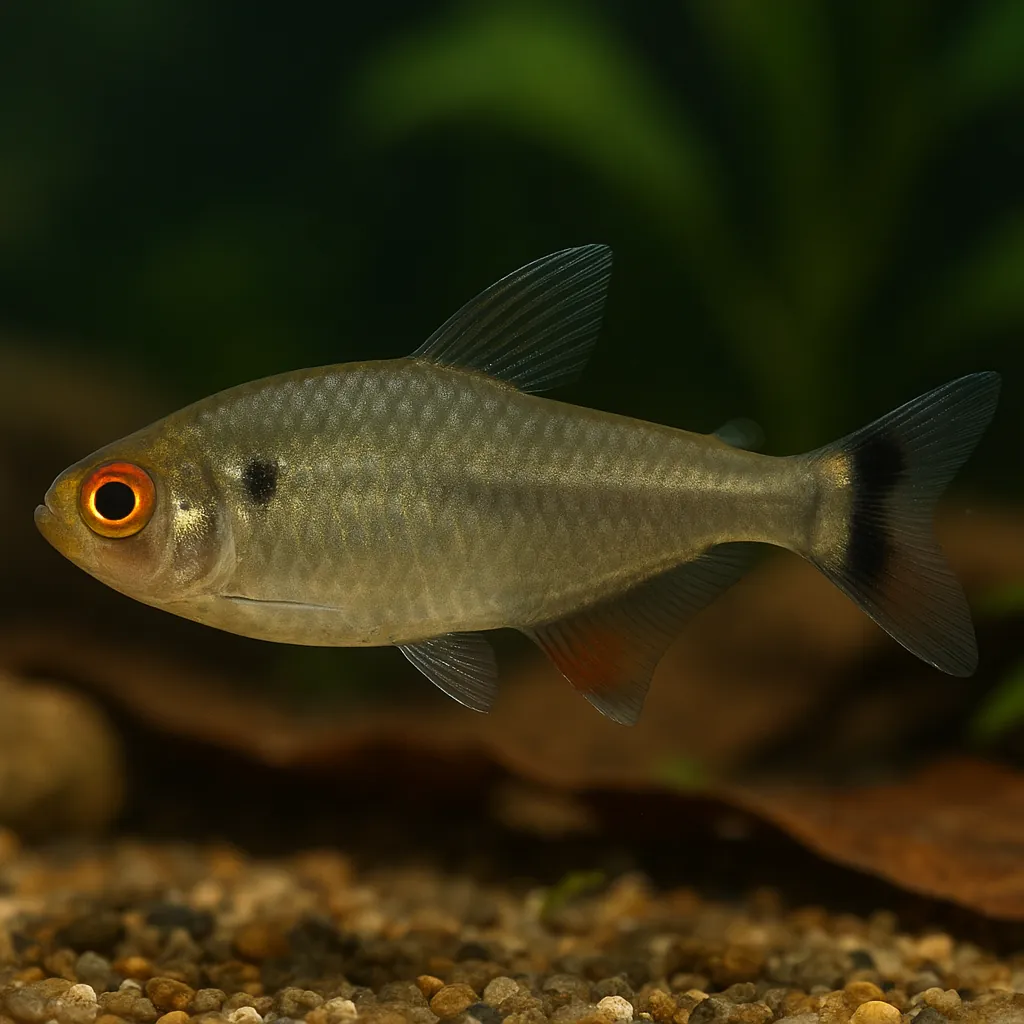
Head and tail light tetra
Introduction
The Head and Tail Light Tetra (Hemigrammus ocellifer), also known as the Beacon Tetra, is a popular choice among aquarists due to its striking appearance and peaceful nature. This small, schooling fish is named for the distinctive reflective spots near its head and tail, resembling tiny lights. Its ease of care and compatibility with various tank mates make it an excellent option for both beginner and intermediate fishkeepers.
Care and Environment
Providing optimal care for the Head and Tail Light Tetra involves replicating its natural habitat and meeting its specific needs.
What is the minimum tank size for a Head and Tail Light Tetra?
A minimum tank size of 60 litres is recommended to accommodate a small group of these tetras, as they thrive in schools of six or more.
What are the ideal water parameters for Head and Tail Light Tetras?
Maintain a temperature between 22°C and 28°C, a pH level of 6.0 to 7.5, and water hardness between 5 to 20 dGH.
How should the tank be set up for Head and Tail Light Tetras?
Use a dark substrate to enhance their colors and provide plenty of live plants, such as Java Moss and Amazon Swords, to mimic their native habitat and offer hiding spots.
Ensure the tank has a gentle water flow, as these tetras prefer slow-moving waters. A quality filtration system is essential to maintain water quality, and regular water changes of 25-30% every 1-2 weeks are recommended.
Lighting should be subdued, with floating plants to diffuse bright light, creating a comfortable environment for the tetras.
As omnivores, Head and Tail Light Tetras accept a variety of foods. A balanced diet includes high-quality flake or pellet foods, supplemented with live or frozen options like brine shrimp, daphnia, and bloodworms. Feed them small portions 2-3 times daily, ensuring they consume the food within a few minutes to prevent overfeeding.
Origin and Habitat
Native to South America, the Head and Tail Light Tetra inhabits the Amazon River Basin, including regions in Brazil, Peru, and Suriname. They are typically found in slow-moving, densely vegetated rivers and streams. These environments are characterized by soft, slightly acidic water, abundant plant life, and a dark substrate, providing ample hiding spots and a rich supply of food sources.
Temperament and Compatibility
Head and Tail Light Tetras are peaceful, schooling fish that thrive when kept in groups of six or more.
What are suitable tank mates for Head and Tail Light Tetras?
They coexist harmoniously with other non-aggressive species such as Neon Tetras, Corydoras Catfish, Guppies, and Rasboras.
Are there any tank mates to avoid?
It's best to avoid housing them with larger, aggressive fish that may view them as prey.
Providing a well-planted tank with ample swimming space and hiding spots will help reduce stress and promote natural behaviors.
Interesting Facts
The Head and Tail Light Tetra is named for the distinctive reflective spots near its head and tail, resembling tiny lights.
How can you differentiate between male and female Head and Tail Light Tetras?
Females tend to be slightly larger and more robust than males. Additionally, the swim bladder in males tapers to a point, while in females, it is more rounded.
What is unique about their breeding behavior?
They are egg scatterers, laying eggs among plants. After spawning, it's advisable to remove the adults to prevent them from eating the eggs.
Sources
All information in this article has been gathered from the following reputable sources:
Overview
Recommended Tank Size 21.1 Gallons (for groups of 6 or more) |
Minimum Group Size 6 |
Minimum Tank Volume 15.9 Gallons |
Maximum Adult Length 2 inches |
Average Adult Length 1.8 inches |
Shoaling (6+ required) Yes |
Preferred Water Type Freshwater, soft, slightly acidic |
Temperature Range (°C) 22–28 |
pH Range 6.0–7.5 |
Water Hardness (dGH) 5–20 |
Typical Lifespan (years) 3 years |